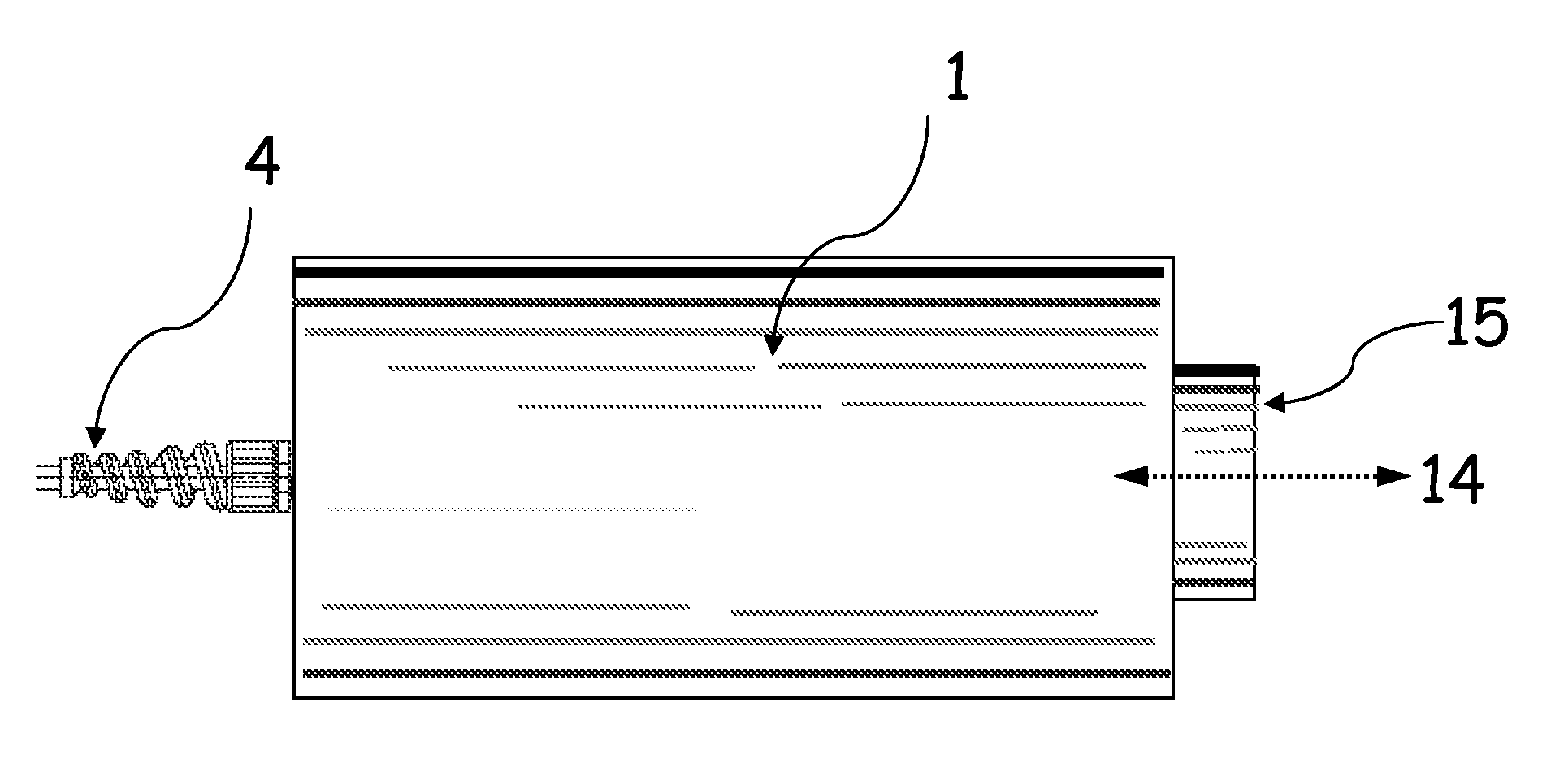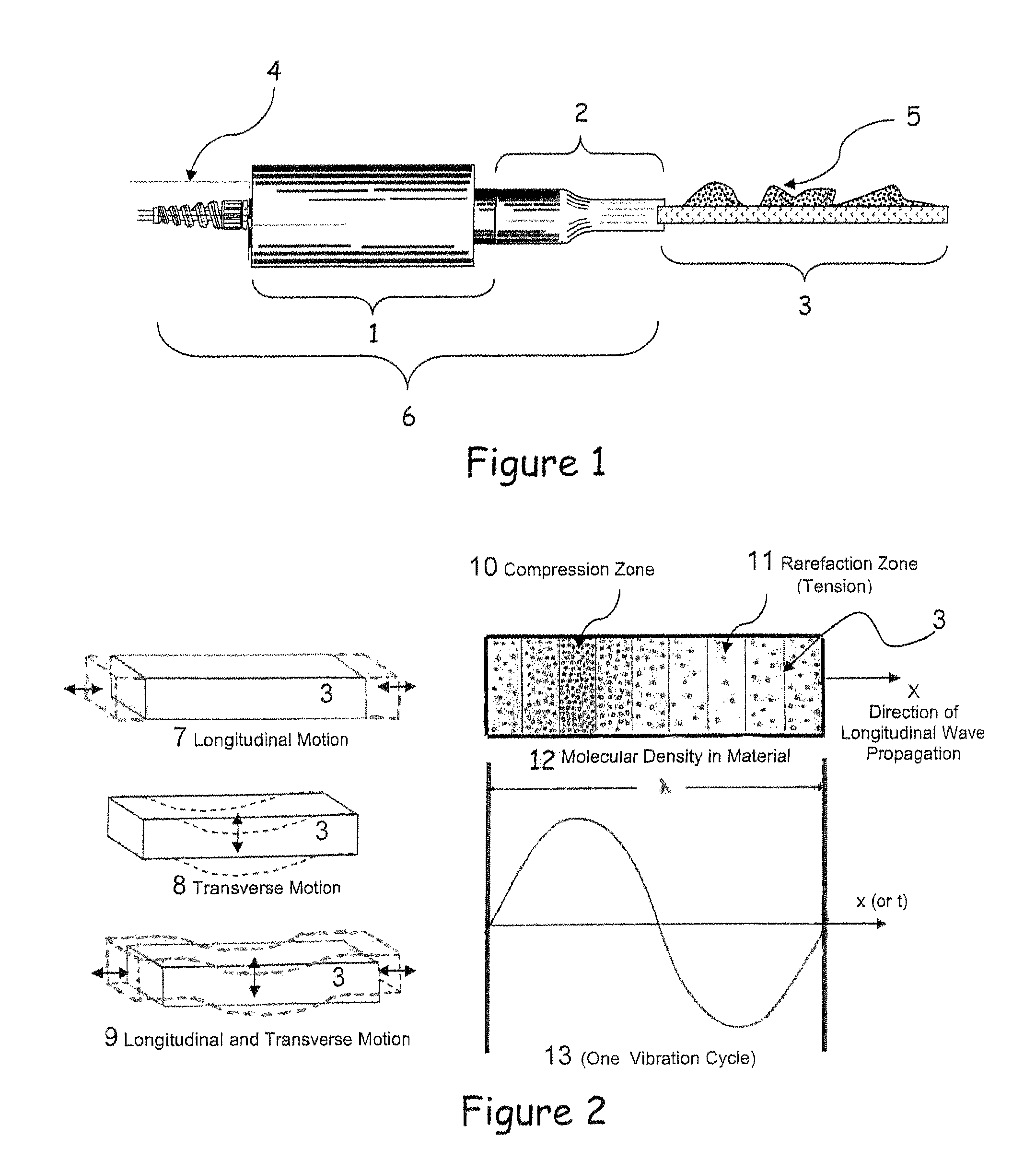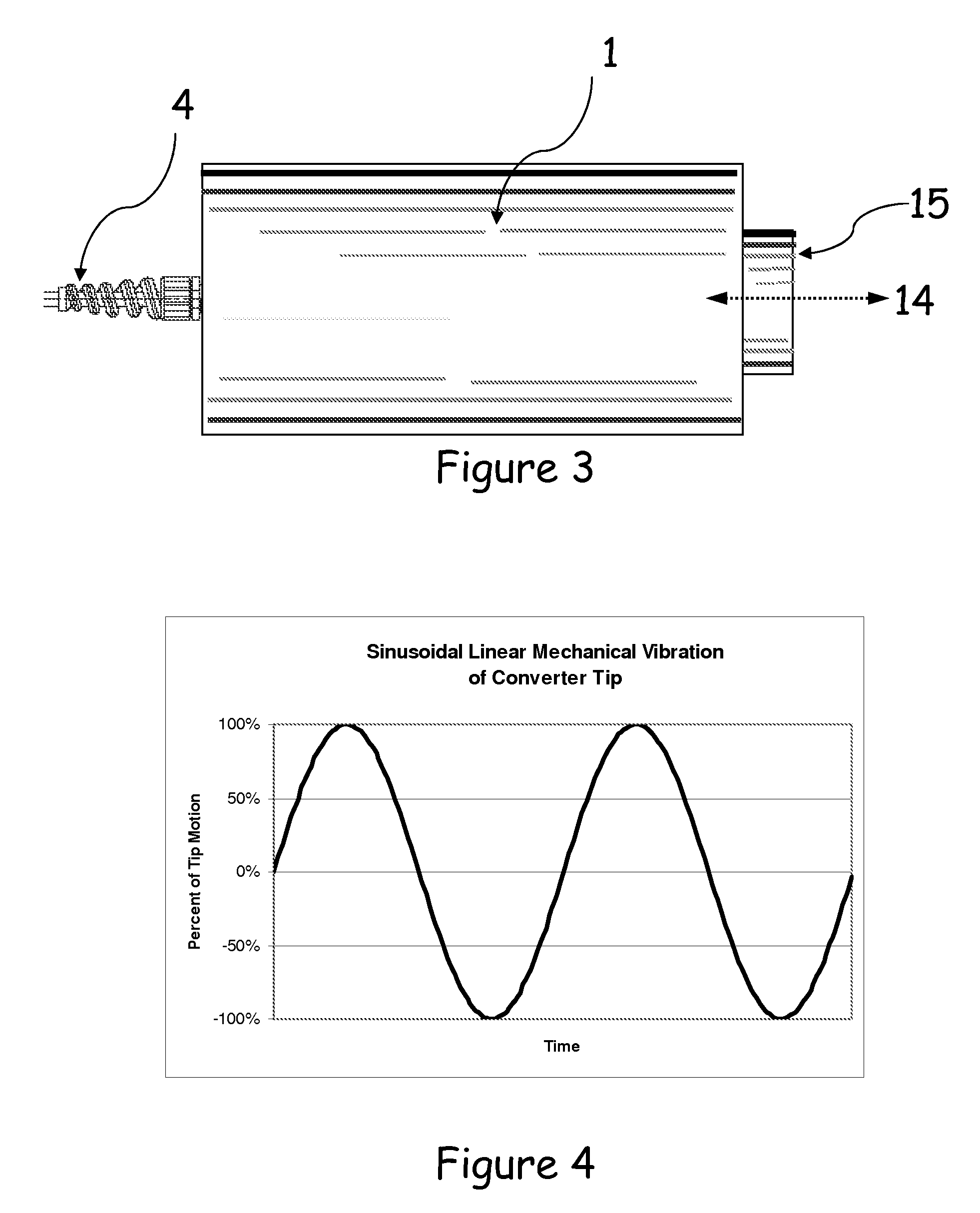Vibrating debris remover
a technology of vibrating debris and remover, which is applied in the direction of mechanical vibration separation, vehicle cleaning, instruments, etc., can solve the problems of significant time it takes to remove debris, obstructed field of view with metal wire technology, and significant problem of debris, etc., to achieve efficient propagation of mechanical motion or vibration
- Summary
- Abstract
- Description
- Claims
- Application Information
AI Technical Summary
Benefits of technology
Problems solved by technology
Method used
Image
Examples
Embodiment Construction
[0042]The concern for the removal of debris from a material is very real. The present invention shall be described with respect to an automotive windshield. However, this should in no way be restrictive, as a great many other materials and applications exist to which this invented debris removal device could be employed.
[0043]As shown in FIG. 1, some type of debris 5, such as ice and or water, can build on a material 3 surface, such as an automobile windshield, to a level where visibility to the outside environment is impaired. This results in a dangerous operating condition. A vibrating debris remover 6 has been invented that can remove debris 5, such as ice, from a material 3 surface, such as an automotive windshield 40 or aircraft airframe 43. The vibrating debris remover 6 consists of two parts, the converter sub-unit 1 and the amplifying coupler sub-unit 2 to which the material 3 is attached.
[0044]The converter sub-unit 1 and amplifying coupler sub-unit 2 are so arranged as to ...
PUM
| Property | Measurement | Unit |
|---|---|---|
| electrical energy | aaaaa | aaaaa |
| time delay | aaaaa | aaaaa |
| frequency | aaaaa | aaaaa |
Abstract
Description
Claims
Application Information
 Login to View More
Login to View More - R&D
- Intellectual Property
- Life Sciences
- Materials
- Tech Scout
- Unparalleled Data Quality
- Higher Quality Content
- 60% Fewer Hallucinations
Browse by: Latest US Patents, China's latest patents, Technical Efficacy Thesaurus, Application Domain, Technology Topic, Popular Technical Reports.
© 2025 PatSnap. All rights reserved.Legal|Privacy policy|Modern Slavery Act Transparency Statement|Sitemap|About US| Contact US: help@patsnap.com



